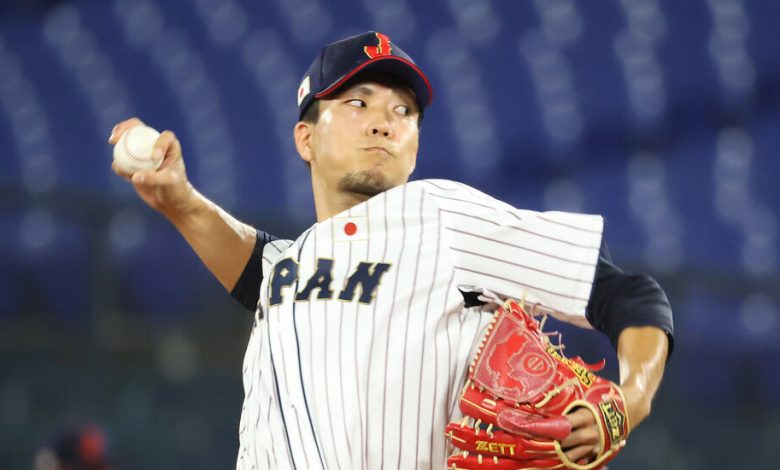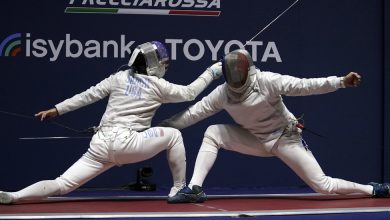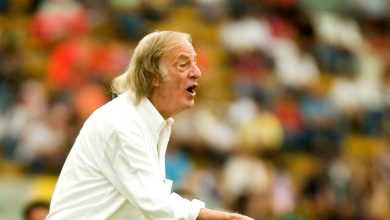Mets Continue to Splurge With Addition of Japanese Ace

When Major League Baseball’s owners tried to curtail overspending by creating a third tier of the luxury tax, it was immediately nicknamed the “Cohen Tax.” Steven A. Cohen, the owner of the Mets, took that as a compliment.
“It’s better than a bridge being named after you,” he said at the time.
Cohen, a billionaire who is the richest owner in baseball, vowed that the tax would not stop him from spending, and he has proved that in a wild off-season in which he has followed up his team’s 101-win season by spending big on Justin Verlander, Brandon Nimmo and Edwin Díaz. The spending spree continued on Saturday when the Mets came to terms with Kodai Senga, a right-handed starter from Japan’s Fukuoka SoftBank Hawks, on a five-year, $75 million contract.
Senga will slot in as the Mets’ No. 3 starter and his contract, which has yet to be finalized but was confirmed on condition of anonymity by a person familiar with the negotiations, will push the team far deeper into the Cohen Tax. Combined with the other tiers of the luxury tax, the Mets would currently be expected to add around $80 million to the team’s 2023 payroll, for a combined outlay of more than $400 million — by far the most total dollars spent on an M.L.B. team.
With Senga, 29, the Mets are buying in on a free agent ace who has long desired a chance to prove himself against M.L.B.’s batters with his “ghost fork,” a deceptive forkball known for falling off a cliff as it approaches the plate. He complements his signature pitch with a fastball that touched 101.9 miles per hour last season.
In 11 seasons with the Hawks, Senga went 104-51 with a 2.59 E.R.A. and was arguably at his best in 2022 with a 1.94 E.R.A. and 156 strikeouts in 144 innings. And like the Mets’ co-aces, Verlander and Max Scherzer, Senga has a championship pedigree, having been the No. 1 starter for the Hawks as they reeled off four consecutive Japan Series titles from 2017 to 2020.
Senga asked to be posted after the 2019 and 2020 seasons, but was turned down by the Hawks, who are the only team from Nippon Professional Baseball that has not posted a player in the current system. Instead, Senga was forced to wait until he reached international free agency, which means the Mets were not required to pay a fee to the Hawks in order to sign him.
Several clubs were said to be interested in Senga. He is a longtime admirer of Yu Darvish, a starter for the San Diego Padres who also began his career in N.P.B. Because Senga and Darvish have trained together during off-seasons in Japan, there was speculation that the Padres might have the inside track to sign him.
“I like him,” Mets Manager Buck Showalter said of Senga at the winter meetings in San Diego last week while noting that it is difficult to project Japanese pitchers for a variety of reasons, such as the increased workload of pitching every fifth day instead of once a week, as they are accustomed to in Japan. Also, the baseball itself is a bit smaller in Japan.
But “a good pitcher is a good pitcher,” Showalter said. “You’re always thinking about the load of pitching every fifth day compared to the other one, but they said that about some really good Japanese pitchers that came over here and did well.
“So he’s a good one. We’ve talked with him. And he’s impressive. You can see why they think so highly of him. I enjoyed our little talk with him.”
Senga threw a no-hitter in 2019 for the Hawks and also pitched for Japan in the 2020 Olympics, working a scoreless sixth inning in relief in the Gold Medal game as Japan beat the United States, 2-0.
The chief concern for Senga will be his durability. He was sidelined for most of 2014 with a shoulder injury and has battled nagging elbow soreness periodically since. Partly because of that, he has thrown more than 150 innings in a season only twice in 11 seasons. His 144 innings pitched in 2022 were the most he had thrown since 2017.
Showalter likened the routine change from Japan to M.L.B. to that of a “Friday night pitcher” in college baseball. “They’re pitching maybe once a week,” he said. “All of a sudden you’re asked to post up every fifth day. Now, they’re throwing 140, 150 pitches in that once-a-week thing, so can you shorten them up at 90 and 100 and have them pitch every fifth day? And OK, what if you’re wrong? That’s the thing you’re always considering.”
Any doubts did not dissuade the Mets from continuing their spending spree this month, which has seen them commit $359 million to five free agents: Senga, Verlander (two years, $86.6 million), Nimmo (eight years, $162 million), the left-hander José Quintana (two years, $26 million) and the reliever David Robertson (one year, $10 million). The Mets also extended Díaz (five years, $102 million) on the largest contract ever given to a relief pitcher.
As the off-season has yet to include the addition of an impact bat, the Mets might not be done spending.




